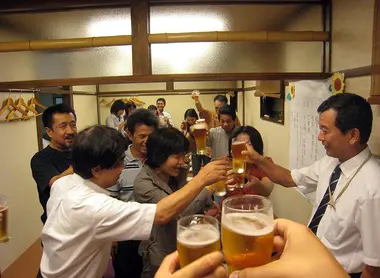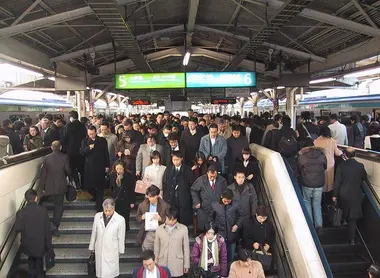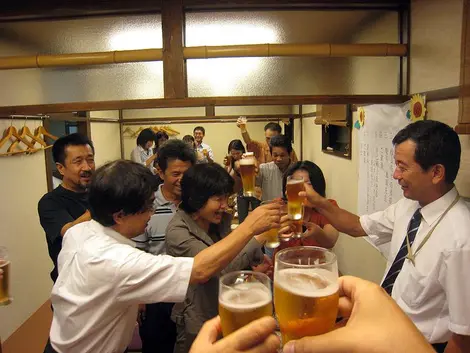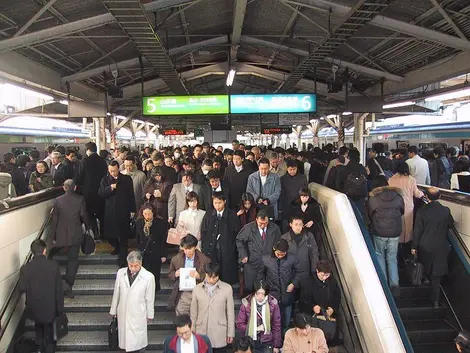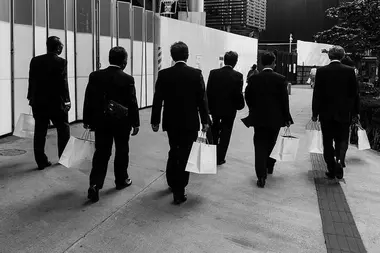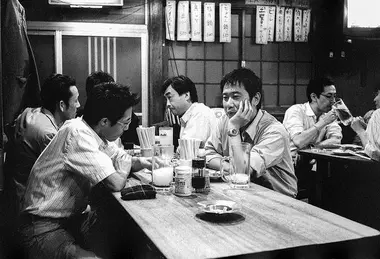The salaryman, pillar of Japanese society
- Published on : 10/03/2024
- by : S.R.
- Youtube
An emblematic figure of modern Japan, the salaryman is more than just an employee: he's a true lifestyle dedicated body and soul to his company. Let's find out who these men are, willing to devote their lives to work, sometimes to the detriment of their personal lives. We'll explore the main characteristics of salarymen, their place in Japanese society, and recent developments in this traditional model. Without further ado, let's plunge into the fascinating world of these hard workers.
What is a salaryman?
In Japan, the term "salaryman" refers to male employees and executives of large companies, recognizable by their timeless dark suits and ties. Recruited straight from university, they are destined to spend their entire careers with the same company, with promotion based on seniority. In exchange for unfailing loyalty and total investment, the company traditionally guarantees them a job for life, in a quasi-paternalist system. In this way, the salaryman devotes himself entirely to his company, which is the center of his social life.
A typical day in the life of a salaryman
A salaryman's day is punctuated by very long working hours, often more than 12 hours a day. After a crowded train journey, it generally begins with a morning meeting (chōrei) to remotivate the troops. This is followed by hours in the office, interspersed with a short lunch break, often taken in front of the computer. In the evening, it's frowned upon to leave before one's superior. As a result, salarymen return home very late, sometimes after midnight, with little time to devote to their families. And the day often ends with an obligatory evening with colleagues, nomikai, with one drink after another in a smoky izakaya.
The importance of work in Japanese culture
In Japan, an individual's worth is measured above all by his or her work and company. The status of salaryman is therefore highly valued socially, perceived as a guarantee of stability and success. And yet, behind the surface, this lifestyle implies heavy sacrifices: little time for oneself and one's family, long days and constant pressure. But in this communitarian society, loyalty and self-sacrifice are cardinal values, and it's difficult for a salaryman to break away from this model or risk being marginalized.
Problems related to overwork: karōshi and exhaustion
The other side of the coin is the chronic stress and burnout that affect many salarymen. Cases of depression and burn-out are common, caused by constant pressure and lack of rest. The phenomenon sometimes even takes a dramatic turn, with deaths from exhaustion, known as"karōshi". Every year, hundreds of salarymen die of cardiac arrest or stroke as a result of overwork. The government is trying to react by limiting overtime, but attitudes are slowly changing.
Inemuri, the art of the micro-nap at work
To keep up with the hectic pace of work, Japanese salarymen have developed the art ofinemuri: the micro-nap. In the office or on the commute, it's common to see employees dozing off for a few minutes, recovering as best they can. Far from being viewed negatively, falling asleep at work is seen as proof of total commitment. Companies sometimes even install rest areas or capsule hotels to enable their employees to sleep for a few hours on site, saving them unnecessary journeys. It's a way for them to recognize their employees' investment, while maintaining their productivity.
Nomikai, after-work parties to unwind with colleagues
Despite their fatigue, it's impossible for a salaryman to avoid "nomikai", those evenings with colleagues where you drink until you're thirsty. More than just a moment of relaxation, these drunken parties play an essential role in team cohesion and hierarchical relations. With alcohol, tongues are loosened, and you exchange more freely with your superiors, forging bonds in a way that would be unthinkable at the office. A salaryman has to take part in nomikai on a regular basis to integrate and progress within the company, even if it means leaving his family behind. Evenings that often end late at night, with colleagues slumped asleep in the subway.
The evolution of the salaryman model among younger generations
While the salaryman remains a central figure in Japan, his image and appeal are changing among the younger generation. Less attracted by the prospect of a linear career and total dedication to the company, more and more young graduates aspire to greater freedom and balance. They no longer hesitate to change employers to fulfill their potential, or even to set up their own businesses. Women, too, are asserting their place in the job market. Faced with an aging population and a shortage of manpower, Japanese companies are having to adapt. They are beginning to offer more flexible conditions to attract talent, with telecommuting and family leave. Slowly but surely, the salaryman model is changing to better match the aspirations of new generations.

